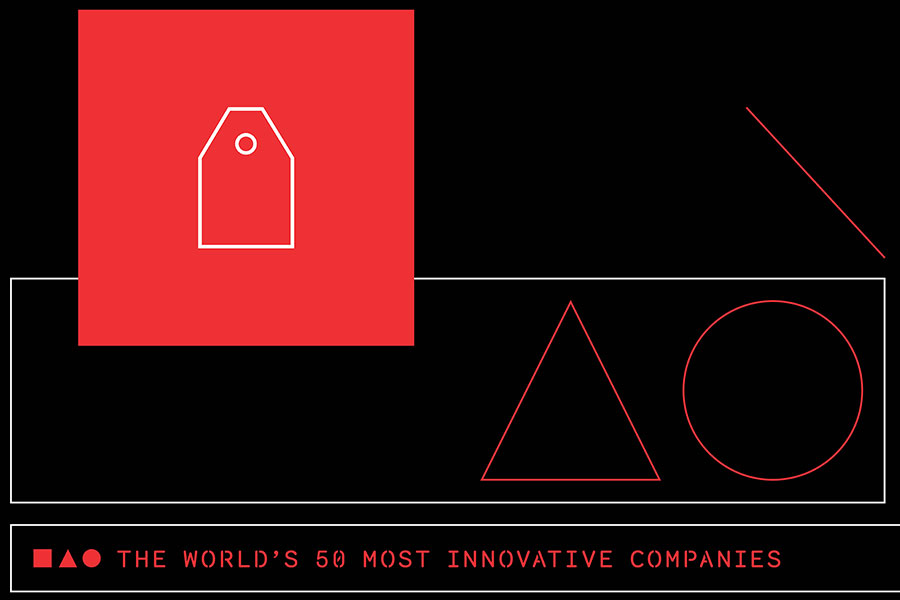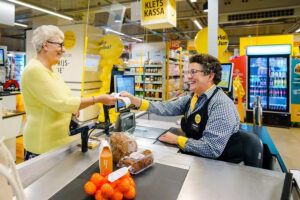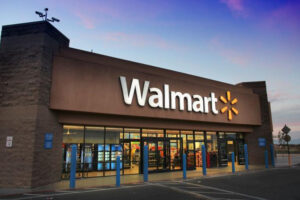The 10 most innovative companies in retail for 2023
Take Studs. The four-year-old startup correctly identified that there wasn’t an enjoyable space for adults to get their ears pierced; it launched ear-piercing lounges, with elegant furniture and hip neon lights, that have been a hit with millennials. Lalo created a sleek brick-and-mortar concept in New York to sell its beautifully designed baby products—complete with a free play experience for babies, to keep them happy while parents shop. Legacy tween retailer Claire’s realized it needed to show up where 11-year-olds were already shopping with their parents, so they launched thousands of branded concession stands everywhere from CVS to Kroger.
Other brands create entirely new ways for customers to interact with them. Cult sneaker startup On created a subscription program for serious runners, who can receive new shoes every six months while their old ones are recycled. Lifestyle brand Jenni Kayne created an experimental design space in Santa Ynez, California, to showcase its furniture and decorating services. A new generation of retailers is rethinking how we buy products from the ground up–making shopping more fun than ever.
1. ON
For creating a perfectly circular system for serious runners
Swiss brand On running has spent a decade targeting competitive runners, who go through several pairs of sneakers every year, since they tend to wear out around 600 miles. In 2022, the brand launched a subscription service, grounded in a circular business model. For a $30 monthly fee, customers can order a new pair of the fully recyclable Cloudneo shoe every six months; when they receive it, they return the other pair to be ground down into pellets and transformed into new pairs of shoes.
On designed its sneakers with only 10 components (as opposed to the 60 in typical running shoes) to make them easier to disassemble and recycle. The company had to come up with a way to use resources that could be broken down into the same polyamide, which limited the design team’s options and forced them to come up with creative solutions that wouldn’t sacrifice functionality. Many of On’s findings during this development process are now being filtered into the company’s other shoes. On is also considering introducing additional items—both footwear and apparel—into the Cyclon subscription program within the next year.
Even as On expands its apparel business and pursues new retail strategies to build its international presence (such as a new partnership with WeChat), it’s keeping a focus on sustainability. On recently unveiled the first shoe made from carbon emissions, via the company’s CleanCloud material, which captures carbon emissions and ferments them to create a plastic material for a shoe’s midsole. (The company’s partner on this endeavor is LanzaTech.) The company hopes to commercialize the shoe in the “near future.” On also recently introduced Onward, a platform to shop and trade in preowned On gear.
The company has been on a growth spurt since its September 2021 IPO. Net sales for Q3 2022 increased by more than 50% to $344 million, with net income hitting $22 million. Notably, direct-to-consumer sales—which encompasses those subscription shoes—grew by 41% in the quarter. On expects net sales for the year to reach $1.2 billion, up 52% compared to 2021.
Read more about On, honored as No. 12 on Fast Company’s list of the World’s 50 Most Innovative Companies of 2023.
2. CLAIRE’S
For reviving a legacy brand beloved by generations of tweens
For five decades, Claire’s has targeted the very specific—and changing—tastes of tween girls. The stores are a fixture of the global retail landscape, with 2,500 locations in 17 countries across North America and Europe. That’s put the company in a particularly tough position as mall traffic falters and e-commerce grows. Claire’s cheap jewelry and trinkets are best purchased in person, since customers don’t spend enough in a single purchase to justify free shipping.
But the company has thrived thanks to an innovative brick-and-mortar strategy that’s involved eschewing the low-rent mall locations that it used to inhabit and instead targeting higher-end malls and shopping streets that see a lot of foot traffic. In 2022, Claire’s opened more than 200 new locations in North America and Europe. It also partners with high-traffic retailers, including CVS, DWS, and Albertson’s, to set up concession stands or mini-shops in their spaces, raising its profile among a new generation of consumers. In 2022, Claire’s signed on Macy’s and expanded its partnership with Walmart. It also entered the metaverse by creating its own digital world on Roblox and partnering with gaming creator MeganPlays.
Claire’s generated $1.4 billion in revenue in 2021, swinging a profit. Its year-over-year sales spiked by 26% in 2022, according to Second Measure, and its loyalty program also doubled in size, reaching 14.5 million members. Claire’s has filed for an IPO, which will likely take place in 2023.
3. SQUARESPACE
For giving creators e-commerce tools
As website builder Squarespace continues its push to become a one-stop-shop for the creator class, it’s deepening its e-commerce capabilities. In 2022, it launched dozens of new products designed to provide creatives with new revenue streams, putting it in competition with Shopify. Squarespace now allows users to create custom merchandise via a new partnership with Printful, which powers production, shipping, and fulfillment. (Products are made on demand, to cut down on overhead.) The site builder also made it possible for users to create paywalled video content so visitors can be converted into paying subscribers. Squarespace also makes it easy for merchants to get paid, allowing them to integrate checkouts easily into their websites and offering pay-as-you go options from Afterpay and Clearpay. These updates allowed Squarespace to grow revenue for the first three quarters of 2022 by 10% year over year, reaching $862 million.
4. LALO
For waking up the sleepy baby products industry
Whether you’re shopping for high chairs or bath toys or anything in between, you’ll likely find yourself buying products from one of the handful of big corporations (Graco, Fisher-Price) that dominate baby products. And while safety and functionality are high on the list of their brand priorities (as they should be), aesthetics are often not. Lalo’s founders wanted to improve on the design of baby products so they better fit into the tastes of millennial parents, but at prices that are affordable. The company launched in 2019 with a sleek high chair that could convert into a toddler play chair. Two years later, Lalo made a move to compete with the biggest names in the baby space by adding 23 products to its line, delivering everything a new parent might need, from an infant bath tub to silicone dinnerware to an elegant play kitchen. Its business doubled in 2022, according to the company, and its returning customer rate has increased to 35%. The company also opened an immersive store in New York in late 2021, with baby-friendly activities like a play-dough bar, allowing parents to focus on shopping.
5. FOCAL SYSTEMS
For cutting out the most laborious tasks for back-end retail workers




